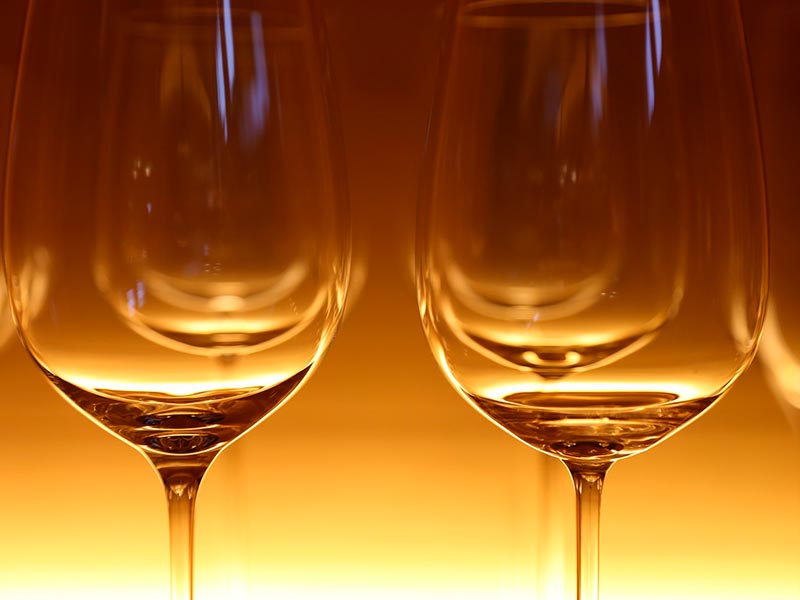Gracious, elegant and refined. The definition of a great taste. Its shape, nature and volume have a remarkable influence in our sensations. Today we are describing the different types of wine glasses we can use and this choice is as important as the content in order to enjoy a good wine.
The market offers a wide range of vessels with different glass styles, sizes, shapes and tones.
If you want to enhance the wine flavor you will need to choose the appropriate glass, so here you can find some tips:
The ideal cup for any beverage should be made out of transparent, lead-free crystal, with a thin and light edge, tall stem and broad bowl so aroma and texture are visible.
For each type of wine we can find a different glass:
- Red wine glasses: should be broad enough to hold only 1/3 of its volume, the perfect quantity for wine to be appreciated. The most common ones are:
- Bordeaux glass, with a tulip shape, wide mouthed, allowing the wines increase the rate of oxidation.
- Burgundy glass is also suitable for red wines, with a rounder shape and a bigger bowl to swirl the wine in an easier way so aromas are released and it gets oxidized.
- White wine glasses: these vessels are thinner and smaller than above described and they have a taller stem to prevent the temperature of the wine being affected by hand heat. They must be filled with less than half of its volume to keep the wine cold.
- Glasses for sparkling wines: the most adequate for sparkling wines, cava, champagne or prosecco.
- First of all we can find the smart Pompadour. A shallow, broad-bowled glass that allows bubbles quickly dissipate so it is addressed to carbonated drinks, as its diameter releases the gas and prevents the aroma concentration. It became the party queen from the 30s to the 70s. However it has been progressively replaced by the Flute glass. As an anecdote, this cup was initially modelled of porcelain on the later XVIII century on the left breast of Marie Antoinette, spoused to Louis XVI but the story tells it actually was Madame de Pompadour’s breast, the king’s lover and that explains the name origin.
- Flute glass is a safe bet, with a tall narrow ball which keeps the head and temperature. It is designed to preserve the bubbles and reduce the surface area so it retains the signature carbonation.
- At last the Tulip glass, with a midpoint design between Pompadour and Flute. The rim is narrower so it permits to get more of the aroma and prevents to quickly lose carbonation.

